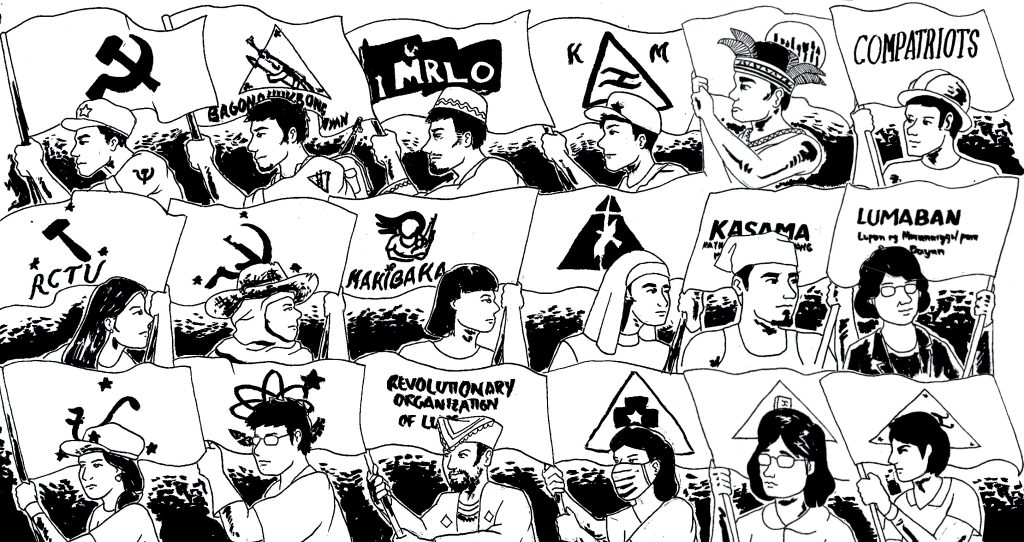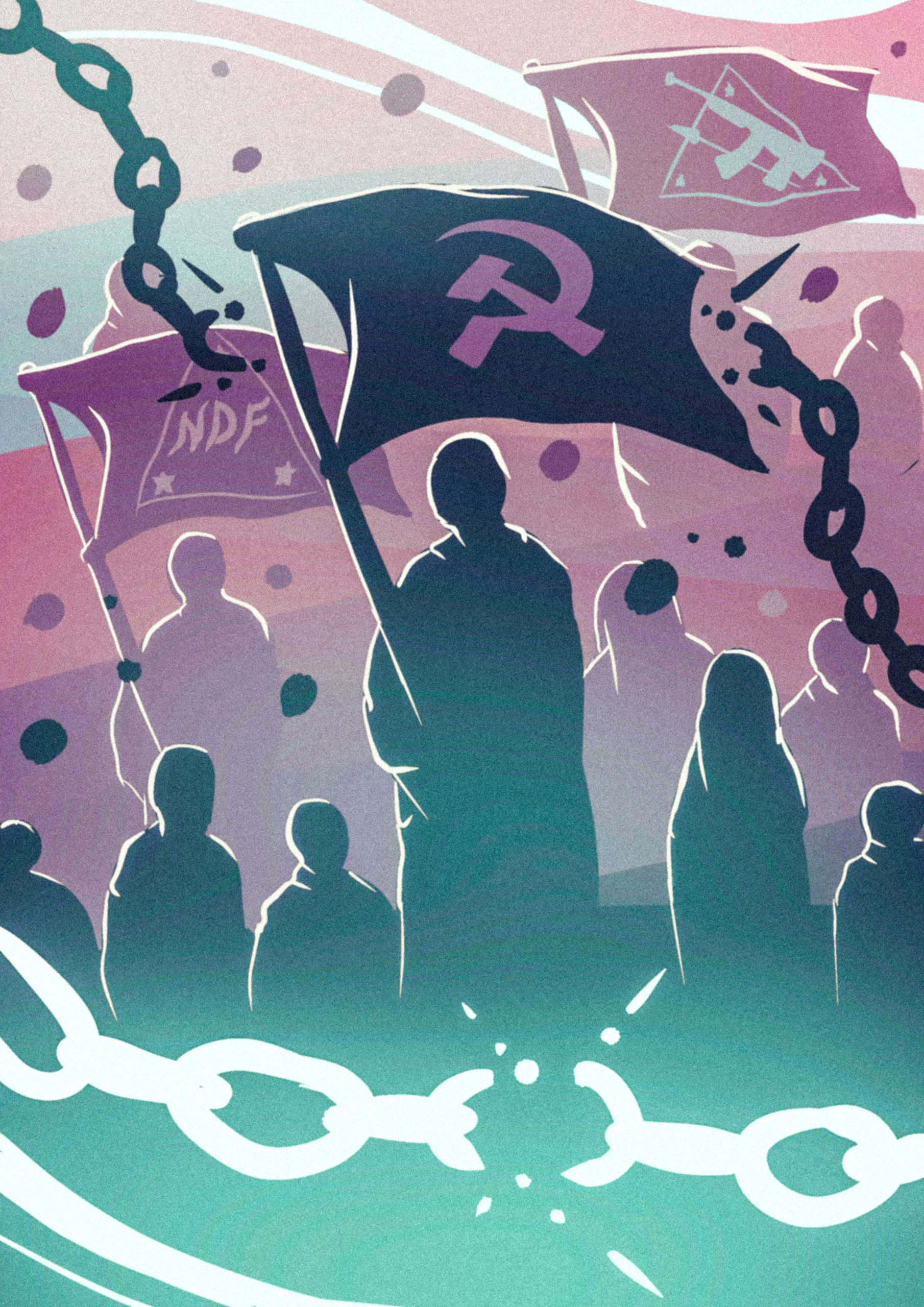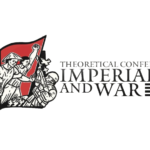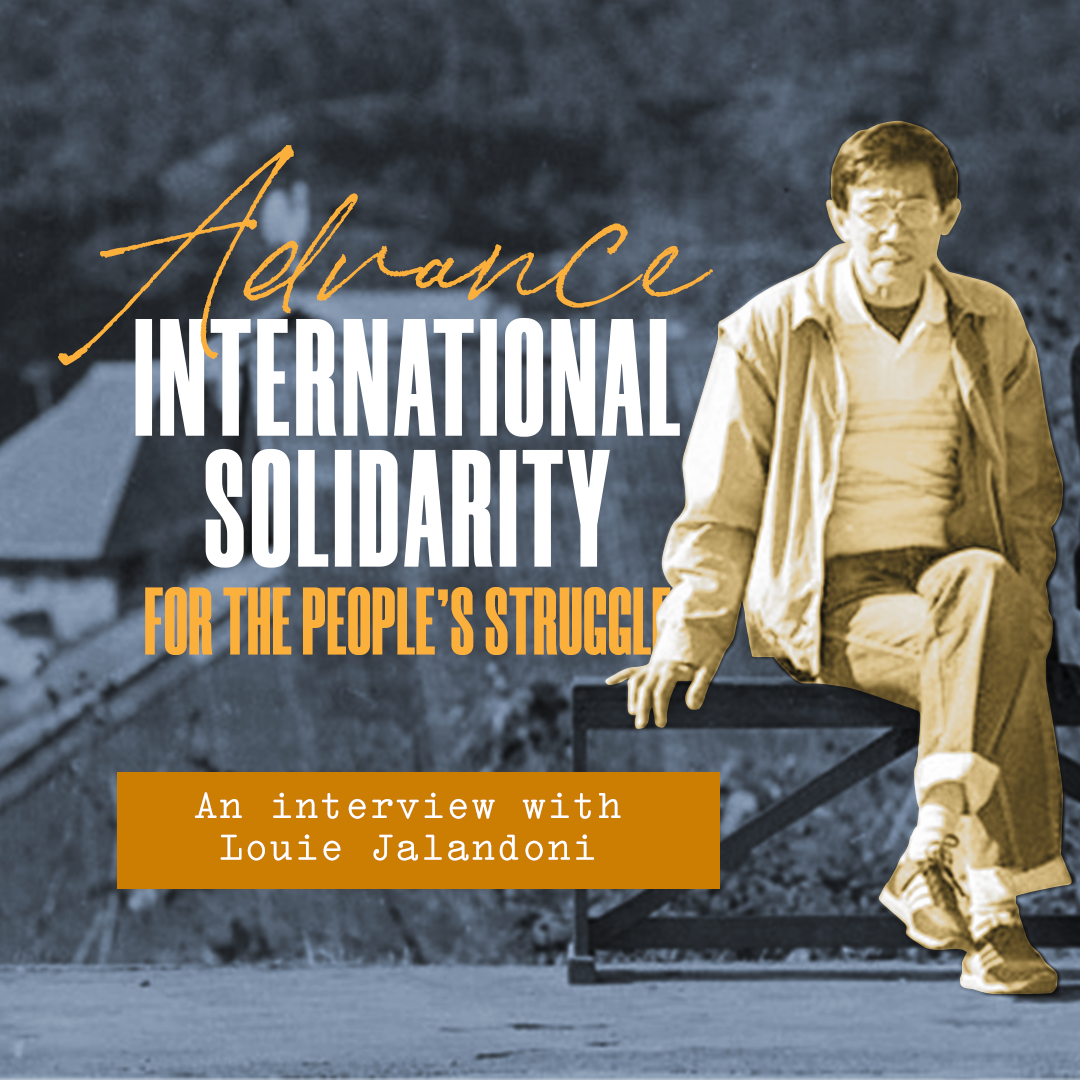Viva NDFP

On April 24, 2023, the National Democratic Front of the Philippines (NDFP) celebrates a half century of valiant struggles since its founding in 1973.
In various places today where the revolutionary movement has taken root, memories are being rekindled, martyrs are honored, commitments find new vigor, and revolutionary mass organizations gear for more action.
The establishment of the NDFP was a defining moment in the Filipino people’s struggles. Awakened people from various classes and sectors decided to support and participate in armed revolution aimed not only at overthrowing a tyrannical regime but also at fundamentally transforming an oppressive and exploitative semifeudal and semicolonial system holding sway in the country.
Forced underground when Marcos Sr declared martial law, the mass organizations electrified by the First Quarter Storm committed to align themselves with the people’s democratic revolution under the leadership of the Communist Party of the Philippines and spearheaded by its military arm, the New People’s Army (NPA).
Since then the NDFP has stayed unstoppable: millions of Filipinos have joined the existing member-revolutionary organizations or formed new ones, bound by the 12-point program.
Despite the most brutal attacks and criminal slander by the succession of reactionary regimes, the NDFP has withstood and survived them all.
Undeniably, there have been considerable personal sacrifices and martyrdoms, which the NDFP appropriately values and honors!
Perseveringly, the united front has steadily grown—expanding and consolidating its ranks not just in the Philippines but also among Filipinos abroad. The brutal armed attacks and the accompanying red-scare, red-tagging, and anti-communist hysteria have failed to stop the NDFP in its tracks. At every turn, and for decades now, the reactionary forces have tried in vain to break up or crush the united front supporting the people’s protracted armed struggle.
Why have the reactionaries failed? Simply because the people that the NDFP faithfully serves have not relented on their support for the revolutionary struggle. Their goals are embodied in the NDFP program. And, through the decades, they have felt the benefits from the revolutionary struggle.
Among these are the palpable fruits of genuine land reform such as agricultural productivity, jobs and livelihood; boons from democratic self-governance such as basic education, equitable justice, basic social services, observance of people’s rights, respect for women and the national minorities, and safeguarding the environment. That the people have to resort to armed struggle just to attain these goals—live decently, freely, and peacefully—speaks of why and how they reject the rotten economic and political system run by the ruling elites.
Whether the reactionaries admit it or not, the revolutionary forces represented by the NDFP remain the strongest, broadest, and most organized armed opposition to past and present reactionary regimes. And for this reason, the reactionaries are most fearful of their nascent power. Hence there is no let-up in counter-revolutionary wars that have ranged from so-called low-intensity conflict to whole-of-nation approach. And as earlier noted, despite some losses and setbacks, the NDFP and the masses have persevered in struggle. For so long as the same socio-economic conditions exist, the reactionary state shall be faced—as it has—with new and more generations of revolutionaries.
Far from being a terrorist, the NDFP has practically gained the status of belligerency which had compelled the reactionary government to respond to the people’s demand for peace talks. But experience shows since the late 1980 that while the NDFP has remained serious about peace negotiations towards a just and lasting peace, the reactionary state has not. But it is amply clear that the use of armed force and deceit to demonize the NDFP will ever fall flat on the face of the state. As it was, as it is, as it will be.
After more than 50 years, it is still a long and hard struggle. But all the difficulties, sacrifices, and the blood of our martyrs will be constant reminders to current and future generations that the revolutionary spirit—coupled with the unstinting support of the masses—will be our ticket to victory, to achieving our liberation as a nation.###







